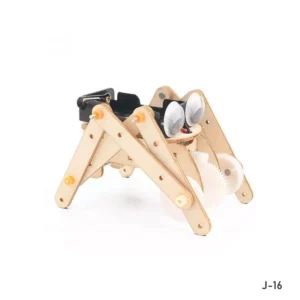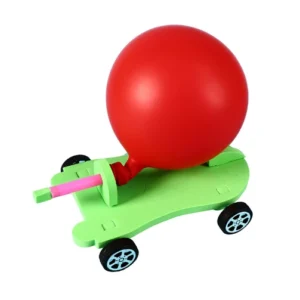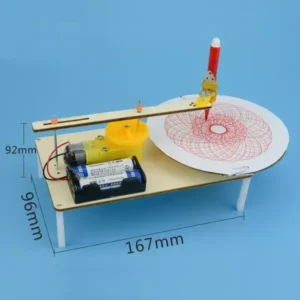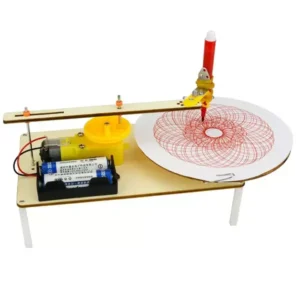Drawing Robot – Energy transformation – Electric energy to kinetec energy conversion
29,00 AED
Science and creativity converge in a drawing robot that illustrates the captivating process of converting electric energy into kinetic energy, allowing the robot to create intricate drawings. This interactive experience introduces young learners to the fundamental principles of energy conversion in an engaging and artistic way.

Product Details
Reviews
Product Details
Objective:
Demonstrate a model of a Drawing Robot to exemplify the conversion of electric energy into kinetic energy for artistic motion and creativity.
Materials included:
Robot chassis or frame
Electric motors or servos
Wheels or robotic arms
Battery or power source
Wiring and connectors
Materials not included in the kit:
Procedure and assembly steps:
Procedure included in the kit manual . This is not a ready made product. Student needs to follow the steps to assemble the model…
Description:
Electric to Kinetic Energy Transformation in a Drawing Robot
Description: Science and creativity converge in a drawing robot that illustrates the captivating process of converting electric energy into kinetic energy, allowing the robot to create intricate drawings. This interactive experience introduces young learners to the fundamental principles of energy conversion in an engaging and artistic way.
The Scientific Theory: The drawing robot serves as a compelling example of energy transformation, where electric energy is converted into kinetic energy, enabling the robot to move its drawing apparatus. Here’s how it works:
- Power Source: The drawing robot is equipped with a power source, typically a battery or a rechargeable battery pack. These batteries store electrical energy.
- Electric Motors: Inside the robot’s structure, there are one or more electric motors connected to the drawing mechanism. When the robot is activated, it completes an electrical circuit, allowing the stored electric energy to flow to the motors.
- Conversion Begins: The primary role of the electric motors is to transform electrical energy into kinetic energy. They achieve this by using the electrical energy to move various mechanical components that control the robot’s drawing arm or pen.
- Precise Movements: The electric motors control the robot’s movements with precision through gears, belts, or other mechanical components. This controlled mechanical motion is a form of kinetic energy.
- Drawing Process: As the drawing arm or pen is manipulated by the motors, it moves across the drawing surface to create detailed artwork. This movement, driven by kinetic energy, allows the robot to produce intricate drawings.
- Artistic Creations: As long as there is electrical energy stored in the batteries and the circuit remains complete, the conversion from electric energy to kinetic energy persists, enabling the drawing robot to continue its artistic endeavors.
Learning outcome:
Have a better understanding of a Drawing Robot to exemplify the conversion of electric energy into kinetic energy for artistic motion and creativity using the model built by the student in this project
Section or subject:
Physics
Grades:
6+
Reviews
Be the first to review “Drawing Robot – Energy transformation – Electric energy to kinetec energy conversion” Cancel reply















Reviews
There are no reviews yet.